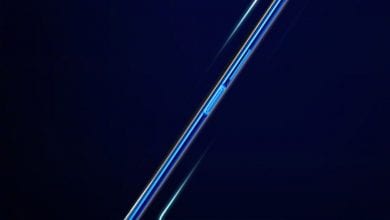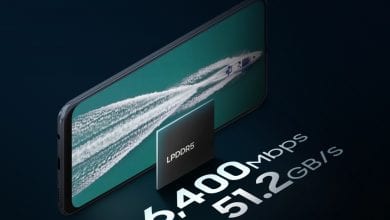Xiaomi 13T Pro vs. Xiaomi 13T
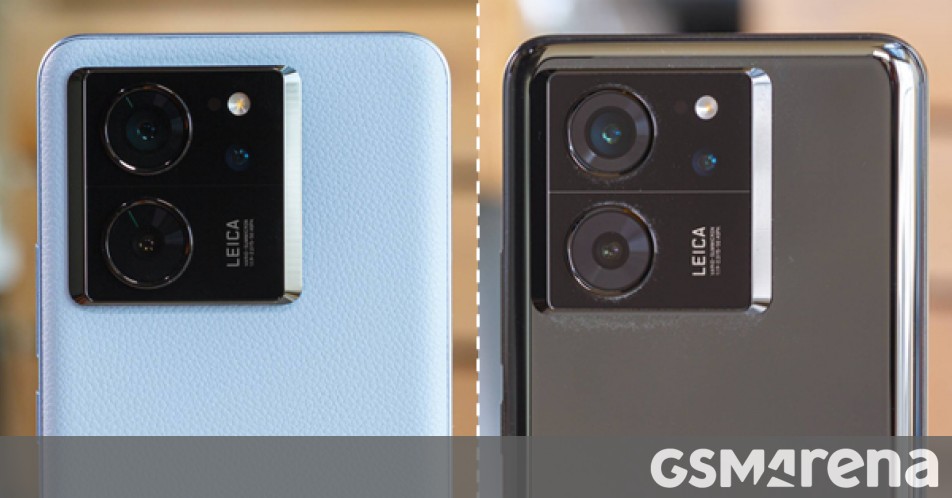
Co-engineered with Leica – that’s the highlight slogan of the Xiaomi 13T series, as the smartphones share identical cameras. The Xiaomi 13T and 13T Pro are also of similar size and with identical design, plus – they share identical displays and batteries.
There are, of course, a couple of differences that give the Xiaomi 13T Pro its premium factor and price tag – the flagship-grade chipset, the faster charging, the expanded video capturing capabilities, faster storage, and Wi-Fi 7 support.
Table of Contents:
- Design
- Display
- Battery Life
- Charging Speed
- Speaker Test
- Performance
- Cameras
- Verdict
Let’s begin by comparing the complete specs sheets here.
Size comparison
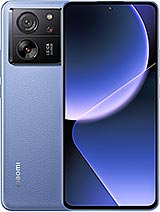
Xiaomi
13T Pro
(6.39 x 2.98 x 0.33 in)
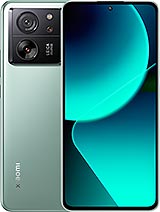
Xiaomi
13T
(6.39 x 2.98 x 0.33 in)
The Xiaomi 13T and 13T Pro feature identical designs, and they are also similar in size and weight. Both smartphones are waterproof, IP68-rated for dust and water resistance. They are both available in two different variants featuring different back panels.
The 13T and 13T Pro have a front Gorilla Glass 5 panel, a plastic frame, and their Black and Green models have a glass back. On the other hand, the signature Alpine Blue model has a panel covered with blue vegan leather.
Aesthetically, both smartphones are great-looking. If we had to choose, we’d go for the leather version as it is grippier than the rest.
Display comparison

Xiaomi
13T Pro
144Hz
pixels
ppi

Xiaomi
13T
144Hz
pixels
ppi
The Xiaomi 13T and 13T Pro feature identical display panels – 6.67-inch CrystalRes AMOLED screens of 1,220 x 2,712 pixels, 144Hz refresh rate, 12-bit color depth, and support for HDR10+ and Dolby Vision streaming. Xiaomi is advertising them for 1,200 nits of automatic high brightness and up to 2,600 nits of peak brightness.
And, quite expectedly, both screens have nearly identical brightness capabilities – about 1,100-1,200nits in Auto mode and about 500nits with manual control.
Both screens offer accurate color calibration.
Xiaomi has listed five refresh rate steps supported by the two models – 30Hz, 60Hz, 90Hz, 120Hz, and 144Hz. The adaptive refresh rate works as expected – most of the UI and apps use 120Hz, while the phone drops down to 60Hz when the screen shows static content. All streaming apps are capped at 60Hz for UI and streaming, too. And, of course, incompatible HFR apps such as the Camera app and Google Maps are always rendered at 60fps.
The only time we saw the screen use 30Hz was for the Always-on Display. And we never saw 144Hz across the UI, but we can confirm the screen uses 144Hz across various games, benchmarks and compatible HFR apps.
Finally, the two 13T phones support HDR10+ and Dolby Vision streaming, and are successfully recognized across Netflix and the likes.
Battery life
Both Xiaomi 13T and 13T Pro are powered by 5,000 mAh batteries.
It might seem the two smartphones offer similar battery life – their Active User Scores are similar, and so is the gaming time. But the 13T offered one hour more web browsing time, though, and it managed to clock 5 more hours on voice calls.
Charging speed
One of the first major differences between the Xiaomi 13T and the Xiaomi 13T Pro is the charging speed. The Xiaomi 13T supports 67W fast charging, while the 13T Pro has 120W HyperCharge support. Both phones ship with their respective power adapters.
Wireless charging is available on neither.
It’s obvious that the Xiaomi 13T Pro is much faster when it comes to charging speed, and it can run circles around the 13T.
Just like with other 120W-capable Xiaomi phones, the 13T Pro supports Boost Charge mode – this feature allows the fastest possible charging at 120W, but only when the phone has its screen turned off as an overheating prevention measure. This option is turned off by default, but you can enable it from within the Battery settings.
If the Boost mode is disabled, then the phone is limited to 60W-80W charging and a full charge is achieved slower – about 40 or so minutes – bringing it closer to the 13T.

Xiaomi
13T Pro
68%
100%
26min

Xiaomi
13T
40%
70%
51min
Speaker test
The Xiaomi 13T and 13T Pro have traditional hybrid stereo speaker setups of the new variety. They both have the two speakers placed on the top and bottom sides behind dedicated grilles. The top speaker also acts as an earpiece, and that’s why it has another front-facing outlet.
The Xiaomi 13T turned out to be the one with a slightly louder speaker system – it scored a Very Good mark on our loudness test, while the13T Pro – a Good mark. They both offer good sound with some bass, good vocals, and somewhat average high frequency presentation.
Performance
The second major difference is in performance, and this part will probably make the biggest difference when deciding on which phone to get – the one with decent or the one with flagship-grade speeds.
The Xiaomi 13T runs on the brand new Dimensity 8200 Ultra based on the 4nm manufacturing process. The 8200 chip has an octa-core processor with a more modern 1+3+4 core combination. The main core is Cortex-A78 at 3.1 GHz, there is a second cluster of 3x Cortex-A78 cores is clocked at 3.0 GHz. The energy-efficient cluster of 4x Cortex-A55 cores is ticking at 2.0 GHz. The GPU is Mali-G610 MC6.
The Xiaomi 13T Pro utilizes top-of-the-line Dimensity 9200+ chipset. It is fabbed on the 2nd Gen TSMC 4nm process (N4P). The chip features an octa-core processor with a prime Cortex-X3 core @ 3.35Hz, 3x Cortex-A715 cores @ 3.0GHz and 4x Cortex-A510 @ 2.0GHz. The GPU here is ARM Immortalis-G715 MC11 GPU with hardware-based ray tracing engine variable rate shading.
The Xiaomi 13T has 8GB RAM with 256GB UFS 3.1 storage, while the 13T Pro base version has 12GB RAM and comes with 256GB UFS 4.0 storage.

Xiaomi
13T Pro
4 nm
base config

Xiaomi
13T
4 nm
base config
Quite expectedly, while still great, the Xiaomi 13T has inferior performance compared to the Xiaomi 13T Pro. This goes through every aspect – the Galaxy 13T Pro has 40% faster CPU and 3x faster GPU.

Xiaomi
13T Pro
1,470,464
4,518 multi-core
84fps (onscreen)

Xiaomi
13T
888,714
4,089 multi-core
43fps (onscreen)
The Xiaomi 13T Pro has cutting-edge hardware and a more advanced processor, higher-end graphics with ray tracing, and a better AI core. It is better suited for high-end gaming, and it has proven to be a phone that provides great sustained performance.
The Xiaomi 13T also offers smooth gaming and excellent sustained performance. Sure, the graphics settings won’t be at maximum, but the experience won’t differ significantly. Still, gamers would notice it for sure. Also, having a previous-generation processor and graphics chip makes the 13T less future-proof than the 13T Pro in the long run.
Camera comparison
The Xiaomi 13T and 13T Pro have identical cameras. There are three on the back – a 50MP OIS primary, a 50MP 2x telephoto, and a 12MP ultrawide. The front camera is 20MP.
The only difference between the 13T and 13T Pro is in the video capturing capabilities – the 13T Pro supports 8K24 (main) and 4K60 (main, tele) options, as well as 4K30 (ultrawide). The 13T maxes out at 4K30 across all rear cameras. The selfie shooter on both phones is limited to 1080p30.
The photo mode defaults to Leica Vibrant mode with AI turned off, and we adopted this mode as a default one for our tests. There is also a Leica Authentic mode with a more natural color rendition, but it also adds some vignetting.
The photo quality on both phones is identical except for minor differences in the color temperature.
The main cameras save detailed photos, the sharpness is just right and there is no visible noise. The image processing is balanced and delivers natural-looking detail in the photos. The colors in the Leica Vibrant mode are, well, vibrant and punchier than they were in real life, but they are definitely not over the top. The contrast is high, while the dynamic range is wide enough, but not too extreme and helps for the overall balanced look.
The ultrawide photos are good – the detail is average, but enough for the ultrawide purposes. The noise is low, colors are likable, the dynamic range is wide. These photos are not as detailed as the ones coming from the main camera, because the camera sensor is smaller.
The photos from the telephoto cameras are solid. They have enough detail, saturated colors, high contrast and good dynamic range.
The 20MP selfie cameras on the 13T and 13T Pro use Quad-Bayer sensors. They save 20MP pictures instead of 5MP, which makes the situation worse. See, the 20MP photos are poor in detail, everything is soft and looks upscaled. Other than that – the exposure is great, colors are lively and punchy, the noise is low, and the dynamic range is adequate




Xiaomi 13T Pro: main • ultrawide • 2x zoom • selfie




Xiaomi 13T: main • ultrawide • 2x zoom • selfie




Xiaomi 13T Pro: main • ultrawide • 2x zoom • selfie




Xiaomi 13T: main • ultrawide • 2x zoom • selfie



Xiaomi 13T Pro: main • ultrawide • 2x zoom



Xiaomi 13T: main • ultrawide • 2x zoom
The Xiaomi 13T Pro, just like many other Xiaomi, Samsung and Apple devices, offers auto Night mode processing in its Photo mode. It will apply whatever simulated exposure and stacking it sees fit – it rarely triggers on the primary and telephoto camera, but almost every time on the ultrawide camera – and it does need it.
The nighttime samples from the primary and telephoto cameras are among the best you can get from a smartphone. The photos are incredibly rich in detail, with no visible noise, wide dynamic range, and superb color saturation. The highlights across all photos are handled with commendable proficiency.
The photos from the ultrawide cameras were shot with the help of Night Mode, usually 1s. They are good – they are well exposed, the dynamic range is wide, the colors are excellent, and the detail is enough even if some of it gets smeared by the noise reduction.



Xiaomi 13T Pro: main • ultrawide • 2x zoom



Xiaomi 13T: main • ultrawide • 2x zoom
Lastly, let’s talk about video capturing. The Xiaomi 13T Pro can do up to 8K24 (main) videos and 4K60 (main and telephoto) capturing, while the Xiaomi 13T maxes out at 4K30. Both selfie cameras support up to 1080p30 capturing. Optional video stabilization (EIS) is available to all cameras.
The 4K30 daylight videos from all cameras have matching color saturation, great contrast and wide dynamic range. The detail is very good on the primary and zoomed videos, but average on the ultrawide. The 1080p selfie footage also has average detail.




Xiaomi 13T Pro: 4K main • 4K ultrawide • 4K 2x zoom • FullHD selfie




Xiaomi 13T: 4K main • 4K ultrawide • 4K 2x zoom • FullHD selfie
The 4K low-light videos are also of high quality. The ones from the main camera are rich in detail, the noise is low, and the color saturation is lively and likable. The contrast is great and the dynamic range is wide enough. The zoomed footage is a bit noisy but still great. The ultrawide clips are usable as they have good colors and are not completely ruined by the noise, but they still have dark exposure and a narrow dynamic range.



Xiaomi 13T Pro: 4K main • 4K ultrawide • 4K 2x zoom



Xiaomi 13T: 4K main • 4K ultrawide • 4K 2x zoom
The Xiaomi 13T Pro also offers 60fps options plus 8K24 capturing. The 8K clips are of mediocre detail but the daylight videos may reveal more than the 4K footage – such as readable plate numbers and signs. The foliage and other random detail do look artificial, but the footage is detailed enough to be usable if you want to extract more from your scene, the noise is low, the colors are accurate, and the dynamic range is wide.
We cannot say the same for the low-light 8K videos, though – they look upscaled from the 4K clips without any improvements.


Xiaomi 13T Pro 8K videos
Here’s a glimpse of how the Xiaomi 13T Pro’s main camera compares in image quality to the Xiaomi 13T’s in our Photo compare tool.
And here’s how the Xiaomi 13T Pro main camera compares in video quality to the Xiaomi 13T’s in our Video compare tool.
Verdict
The €500 Xiaomi 13T and the €700 Xiaomi 13T Pro are quite similar and offer flagship-grade designs and builds, outstanding displays, great cameras, excellent battery life and charging, speakers, and reliable software. There are a few notable differences, with performance being the major one.
The Xiaomi 13T offers plenty of decent performance, and even modern games will run smoothly and well, but the Xiaomi 13T Pro is the one with the flagship-grade processor, graphics, storage chips, and even Wi-Fi 7 support. So, if ultra graphics and ray-tracing niceties in games are a must-have, and you want the most future-proof hardware, the 13T Pro and its Dimensity 9200+ chip will make sense. Otherwise, the 13T and its Dimensity 8200 Ultra platform would do just fine and you won’t see it hiccup for at least a couple of years.
The Xiaomi 13T Pro and its more powerful hardware also allow for smoother 4K60 video capturing as well as 8K24 option. While those are niche modes, some users would prefer smoother clips, especially in mode-demanding scenes.
Finally, there is the matter of the faster charging – 120W on the Pro vs. 67W for the 13T. But unless you are using the Charge Boost, the difference in the charging times is minor.
Long story short – you either get the Xiaomi 13T for its €200 lower price and well-rounded specs sheet, or you spend more and get the Xiaomi 13T Pro for its flagship performance, video capturing and amazingly fast charging.

- The faster performance and storage.
- The faster charging.
- The 4K60 video recording.
- Wi-Fi 7 support.
Get the Xiaomi 13T Pro for:
| 512GB 12GB RAM | € 679.99 |
€ 695.59 |
| 1TB 16GB RAM | € 815.23 |
€ 816.83 |
| Show all prices | ||

- Slightly better battery life.
- The cheaper price.
Get the Xiaomi 13T for:
| 256GB 8GB RAM | € 493.45 |
€ 508.75 |
| 256GB 12GB RAM | $ 439.50 |
$ 469.50 |
| Show all prices | ||
المصدر : Gsmarena .


